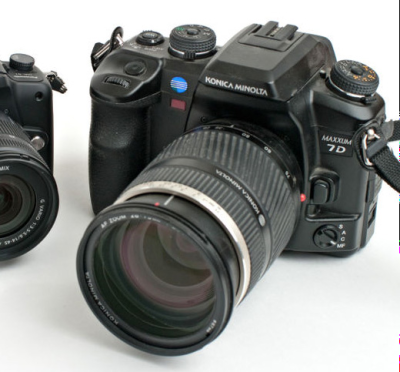 My old K-M 7D. The 28–75mm K-M lens was made in
My old K-M 7D. The 28–75mm K-M lens was made in
Tamron's factory in China.
D. Hufford wrote on the "Oops" post that he really liked the files from the original 2011 pre-X-Trans X100. I've heard that said before by others.
Paul De Zan chimed in to say "I feel the same way about the now-antediluvian, 6-MP, CCD-sensor Nikon D40, which to my eye makes the best outdoor, natural light color of any digital camera I've ever used." Ken Rockwell was a big D40 fan too. Harvey Bernstein added, "since some are talking about the ineffable characteristics of certain cameras, I claim the ancient Nikon D2Hs as one of that group. The files are small [4.1 MP] and the sensor is challenged by scenes that have wide dynamic range, but within its limitations, they can be lovely."
Can you think of any now-outdated camera you had that gave you files you still remember as being better than average?
For me it was the 6-MP Konica-Minolta 7D, introduced in early 2004 and effectively orphaned when Konica-Minolta exited the camera business in 2006. It had very accurate color, lovely low contrast, and yielded files that I thought were just lovely. The lens was a zoom without much in the way of pedigree, but it was a honey on a crop-sensor camera.
I might actually still be using mine today, except it broke. I tried to get Sony to fix it but their policy at the time was to replace it with a then-current Sony camera, and I didn't qualify for that.
A few samples:
I loved that camera. In fact it kind of spoiled me for later cameras, a bit. I had no problem printing the 7D's files, even way past my then-standard size of 10.5 inches wide. Some people claimed an allergy to "uprezzed" files when printed, but I liked them. In fact I've sometimes wondered, in the back of my mind, whether 6 MP might not be the ideal size for APS-C pictures. It's one of those things we can never know, because of course it would be marketing suicide for a sensor maker to make a state-of-the-current-art 6-MP APS-C sensor now.
Typepad's Comments sections are not set up to accept images, but you can add simple HMTL in comment text blocks, and here's how to put an image in the comments. Use this code:
...Where "http:///image.jpg" is an sRGB image on the Web (not on your computer, mind you, the Web) that is no more than 470 pixels wide.
...Samples not required, of course.
Any digital cameras from the past you fondly remember?
Mike
Original contents copyright 2016 by Michael C. Johnston and/or the bylined author. All Rights Reserved. Links in this post may be to our affiliates; sales through affiliate links may benefit this site.
(To see all the comments, click on the "Comments" link below.)
Featured Comments from:
Christopher C Fuller: "Loved the JPEGs from the Fuji X100, but at some point I remembered how much I enjoy the colors from Nikon cameras I had used in the past: especially the D70 and D2H. So I purchased a used D700. Match that with Nikon's great (and mostly inexpensive) manual and auto focus prime lenses and the files, both JPEG and raw, are glorious. There's little more that I need now than my D700 and the 35mm ƒ/2 AF-D. The X100 helped learn to love the 35mm field of view and the rendition of the 35mm ƒ/2 AF-D is wonderful."
Ken N: "Olympus E-1. I still use it the most of any digital camera. Best colors and skin tones."
Kevin: "Funny, I was just perusing my photo library the other day when I noticed a short period of photos that just had a wonderful, simplistic 'feel' to them. I was surprised when the EXIF revealed that they were all taken with the Nikon D40 and 18–135mm lens. I eventually gave that setup to my father. I may have to trade him my D500 to get it back. :-) "
Rodger Kingston: "Dear Mike, I like several of your recent posts, which I would generally group together as 'Cameras that best suit my needs.' I decided about five years ago that the Fuji X10 and X20, with their little fingernail-sized sensors, suited me just fine. A joy to use, they feel a lot like an old screw-mount Leica in hand, and produce files that allow me to make prints as large as my printer will allow (17x22"), which look great on walls—even gallery and museum walls. I'm going to France in September for a documentary film on WWI that my wife is involved with, and because I don't want to lug a big Nikon kit, I bought a new Fuji X30, and will bring the X20 as a back-up. Some laugh at me for using such 'toy' cameras, but they laughed at Henri Cartier-Bresson for using a toy as well."
Jean: "The 2003 Olympus Camedia 5060 Wide Zoom has already been mentioned. Lovely camera! It was a high-end compact camera with a magnesium body, a fully articulated screen, a big battery and with an adapter, you could get 19mm-e wide-angle. The ISO topped out at 400, and it...was useless. If ISO 80 was selected however, the pictures had a lovely color, just like many Olympus cameras. Olympus made a small nice leather holster that could hold an extra battery. TIFF and raw was built in, but was excruciatingly slow. The lens was ƒ/2.8–4.8, and 27–110mm-e. ISO 200 max, ƒ/4.8 and 110mm-e, was a challenge. You had to pre-focus, or the shutter lag was long.... It had a hot shoe and Olympus had a nice speedlight that worked well. Startup time was 'Extremely fast, 3 sec.' According to Olympus.
"I loved this camera, and took it everywhere. And it really sets today's complaining about how bad the newest gear is into perspective. I paid US$1500 for the camera, and about $600 for a gigantic solid state 1 GB Compact Flash card. (No Micro drive, thank you). The adapter, bag and second battery was another $500. :-D The Fujifilm X100T or X-Pro2 is my go everywhere cam today. OMG what a rocket! Still, the old faithful gave excellent pictures!"
Gary: "It's great that so many are happy with older digital files, but I think exactly the opposite! I switched from film to digital when Nikon brought out a digital SLR. I forget the model; it was about 6 MP. At the time I bought into the idea that 6 MP was more than enough to warrant abandoning 35mm film. But looking back I now believe that I made the move to digital way too soon, and should have stuck with film for several more years. I look at my early digital files and think, I'm fairly happy with that shot, but I'd be even happier if it had been on film."
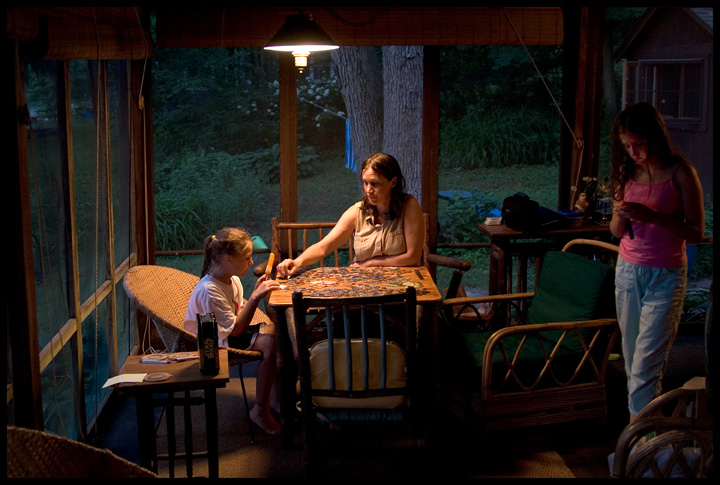
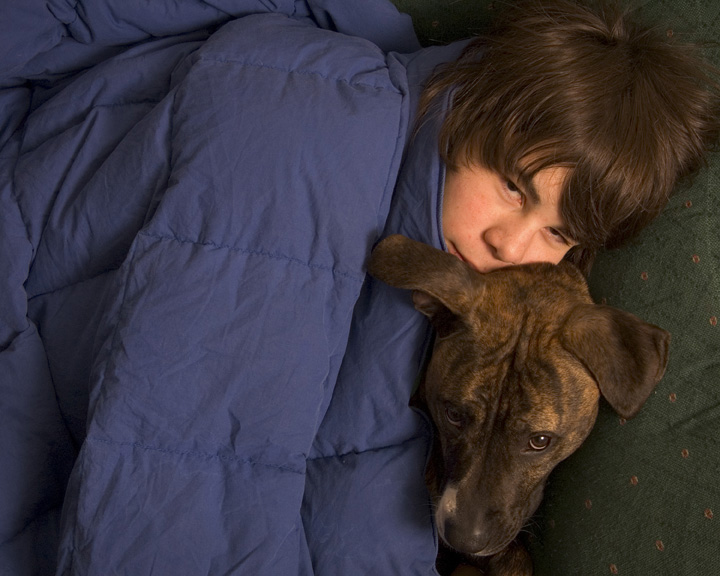




Nikon Coolpix 4500 4MP camera. My first 'serious' digital camera (if you don't count the Kodak 640x480 clip-on for the Palm Pilot). Absolutely gorgeous color rendition of grass and sky where even today's cameras tend to turn the grass yellow and blow out the sky.
Posted by: Dave New | Friday, 22 July 2016 at 01:55 PM
Great to see so many comments and wonderful photographs here. Other folks reminded me also of my Fuji F31fd, a camera I thought so highly of, I bought two of them. What a terrific little compact camera; it's performance at high ISO was astonishing for the time.
Singapore at night at ISO 2000 with the F31 fd
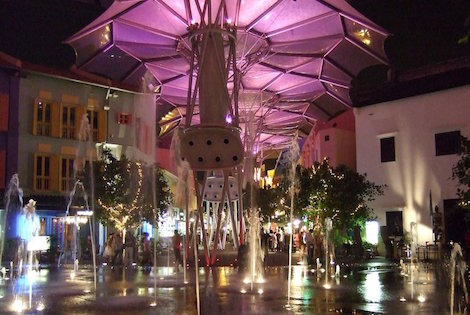
I also forgot about my beloved little Fuji X10, which was the "gateway drug" to the Fuji X system for me. I literally bumped into the display at a Costco for this camera, and bought it on the spot. What a wonderful surprise. I took this little dynamo on a trip to Lake Tahoe and Canyonlands and Arches National Park in October 2012, along with my Canon pro system, and was shocked to find the images from the Fuji X10 were better than my Canon 1D MkII. The X10 had a terrific IBIS system and the shot at Deadhorse Canyon below was taken handheld while I was making images using the tripod with the Canon.
Lake Tahoe
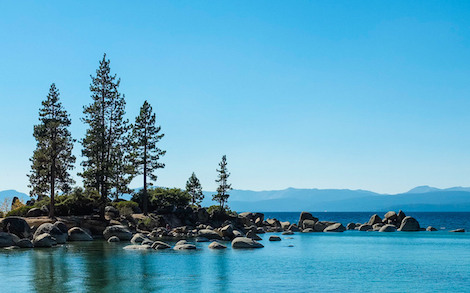
Deadhorse Point
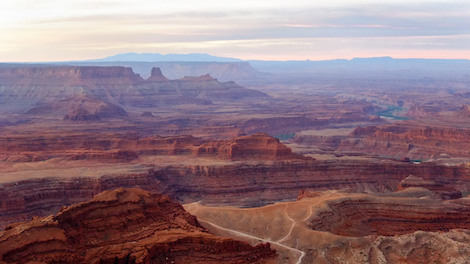
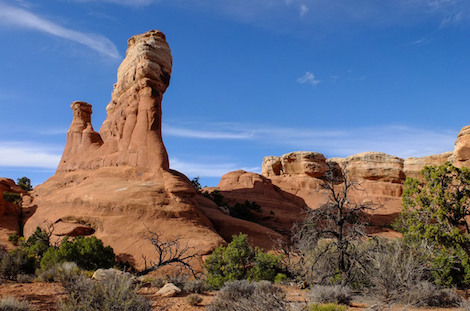
Arches
Finally, while the 'ole "warhorse" X-Pro1 has been dissed left, right and center for slow AF, wonky RAW files, blah, blah, blah, there is no doubt that in the hands of a capable photographer, it is still capable of astonishing image quality. It was first camera I that used that reminded me of the magical image quality of the original 12 megapixel Canon EOS 5D
Posted by: Stephen Scharf | Friday, 22 July 2016 at 02:08 PM
I will always have a place in my heart for my very first digital camera, the 4MP Pentax Optio 43WR. I felt it was near perfection in the palm of my hand. Too bad is didn't capture RAW.
Posted by: Alex Mercado | Friday, 22 July 2016 at 02:12 PM
Nikon D1X, shooting raw. Has a color palette and a grain or 'bite' that reminds me of my favourite slide film, the late lamented Fujichrome Astia. Not much good above 400 ISO, but then neither was Fujichrome ;).
I pull this beast out a few times a year, whenever I know I'll be shooting outdoors in good light. Gorgeous results. And Lightroom can import the RAW as 10 megapixel, instead of the 5 MP JPEGs.
The D1X was the camera that convinced National Geographic that hey, maybe this digital stuff is good enough for the magazine:
http://www.robgalbraith.com/multi_pageff3f.html?cid=7-6450-6561
Posted by: John Holland | Friday, 22 July 2016 at 03:02 PM
Olympus E-1 with its fabulous Kodak sensor (I think essentially the same sensor technology used in some early digital Leica and Hasselblad cameras too).
Made the mistake of selling a previous E-1. I've kept the one I bought to replace it, and it's staying - with the 14-54 making a great all purpose combo in the worst of British weather conditions. It absolutely sings with the 11-22 too, and as per image from London Triathlon above, not too shabby with the 50-200.
Posted by: Jonathan Schick | Friday, 22 July 2016 at 03:22 PM
One *more* vote for the venerable Leica Digilux 2. Yes, the sensor can be noisy at 400, the RAW buffer is miniscule, and the EVF can be challenging....BUT it is such a versatile camera, that looks and *feels* the way a manual camera should feel.
It's enough that the camera looks good - but then you download the files, and even the jpegs are awesome. There is a spirit and character to those pictures, and the lens punches far above its weight.
Posted by: ivan | Friday, 22 July 2016 at 05:39 PM
I think when I wax nostalgic for "old" digital cameras, it is for the best that the older sensors produced forgetting the camera limitations that drove me batty. I had an Epson RD-1, which reportedly had the same sensor as the Nikon D100. When it worked: magic! But the RF system had "backlash" in it and high ISO files weren't great. Still, I have thought about buying an old D100 just to see if I could reproduce the best IQ I got out of the Epson. Current price at KEH for the D100 was about $109 -- practically free. My own digital progression was:
1. Sony something cam. Used until it stopped working, then threw it away.
2. Canon Digi-Rebel. Sold to finance the purchase of:
3. Epson RD-1. Sold to finance purchase of (actually the sales tax on):
4. Leica M8, Canon 5D. Sold to finance the purchase of:
4. Leica M9, Nikon D3 . . . and there I have stopped for a good long while, adding an Oplypus OM-D, a Fuji X-Pro1 and a Sony Alpha 6000 along the way.
The first camera on that list that made me really, really happy with the IQ was the Nikon D3, which really isn't all that old. I still use it all the time and it just occupies a sweet spot of IQ, file size and dependability. The M9 beats it on pure IQ, I suppose, but there is so much more to a good picture than resolution.
Posted by: Benjamin Marks | Friday, 22 July 2016 at 06:09 PM
I'll second Stephen Scharf's comments on the Fujifilm X10; what a fantastic camera and sensor combo. I gave mine to a young photographer friend and bought an X20 and if my friend wasn't doing such great work with it, I'd regret saying goodbye to it.
Like the original X100, it produced wonderfully deep files that looked good in color and monochorme.
(Yes, I'm a huge fan of David Rees.)
Posted by: Maggie Osterberg | Friday, 22 July 2016 at 06:31 PM
1. The Leica Digilux 2 had a fantastic lens/sensor pairing. ISO 200 and 400 were pretty bad, but at base ISO the results were terrific.
2. Epson R-D1 - same 6MP sensor as the Nikon D40 I think, but paired with M mount lenses: beautiful.
3. The Sigma DP2 original - very film-like and limpid rendering.
Pity Leica didn't update the D2 and Epson the R-D1....
Posted by: IanC | Friday, 22 July 2016 at 08:46 PM
Nikon D80.
Posted by: John Mitchell | Friday, 22 July 2016 at 08:51 PM
I agree with the sentiment that the X100 produces wonderful files. I'm not just saying that because mine won't break, and it seems silly to replace a perfectly good camera. :-)
I yearn for the Xpro2. But my Canon 1D4 also keeps on plugging along. Silly reliable cameras!!
Posted by: Eric | Saturday, 23 July 2016 at 11:10 AM
Fourthing or fifthing the X100 recommend. I have so many prints, so many favorite digital images, with a color that makes me so happy in a way I can't really describe. I loved my original 5D but after I got the x100, I could barely tolerate the colors out of the 5D.
Posted by: Saethor | Saturday, 23 July 2016 at 03:52 PM
I thought the Nikon P5100 produced results that were better than they had any right to be, with its tiny sensor and zoom lens.
Posted by: Ben Rosengart | Saturday, 23 July 2016 at 05:45 PM
+1 for the 2004 8MP Oly C-8080 WZ. It was an odd looking little camera but the files were very nice. I'm sure much of the love comes from it being was my first digital and the fact that I have blocked it's miserable speed performance from my memory.
Posted by: JimA | Sunday, 24 July 2016 at 03:59 PM
Fuji X-Trans files are pretty special (I came into Fuji already in the X-Trans era, so I don't know if I'd like their earlier files better). The 16 MP X-Trans files have always beaten any comparable resolution file, at least to my eye. They pulled a successful transition to 24 MP, too - the X-Pro 2 is by no means old, but it's a gem - by far the best APS-C files I've seen (at least in part due to the wide range of absolutely superb APS-C specific lenses). it holds up against full frame files beautifully except in one specific situation.
In order to beat the X-Pro 2, you need:
A full-frame camera with a resolution advantage (the X-Pro 2 will hang RIGHT in there with 24 MP FF in any situation, while it can be beaten by 36+ )
A very good lens - all of Canon, Nikon and Sony have quite a few primes and a few zooms that are that good, but many of the less expensive zooms ARE NOT).
Superb technique - either a sturdy tripod or a shutter speed that is above the "shutter shock range", plus careful focus and exposure. If it's on a tripod, using a remote release and mirror up (if applicable) is a good idea.
If you do all of these things, yes, you can produce a file with more detail (and perhaps slightly more dynamic rangel than the X-Pro 2 can give you (it'll take some Photoshop or Lightroom work to get the color as good).
A good X-Pro 2 file will print 24x36" easily, so add a 44" printer to the list of what you need to really appreciate the 36+ MP file.
Posted by: Dan Wells | Monday, 25 July 2016 at 04:25 PM
Soon we will be able to get an app for our phones to take those low res, low dynamic range images, like those made by those big "old school" dedicated cameras that you held with both hands, and then had to wire them up to a computer to transfer the images. Reminiscent of the time when photography was somehow more "authentic" than it is today.
Posted by: Mike | Wednesday, 27 July 2016 at 12:10 AM
Having had a few more days to review my photos, I find that the prettiest image files from "digital" are from Portra 400 fed through a Noritsu! Something about the color balance from mixed lighting and the saturation of just the right (for me) colors.
Posted by: Vijay | Wednesday, 27 July 2016 at 01:15 PM
Canon EOS10D. My first DSLR and first digital camera of any kind...sold off Nikon film gear to get it. Walked in to buy a D100 and walked out a Canon believer. I loved the feel of that camera in my hands and it was bulletproof...flogged that camera as a daily p/j until the 5D and then still preferred the 10D until demand dictated larger files. That camera, with a 50mm attached, survived snowstorms, downpours and even a quick submerging and kept on going. Still have it but the shutter button is getting tired and cranky.
Posted by: Marty | Thursday, 28 July 2016 at 10:12 AM